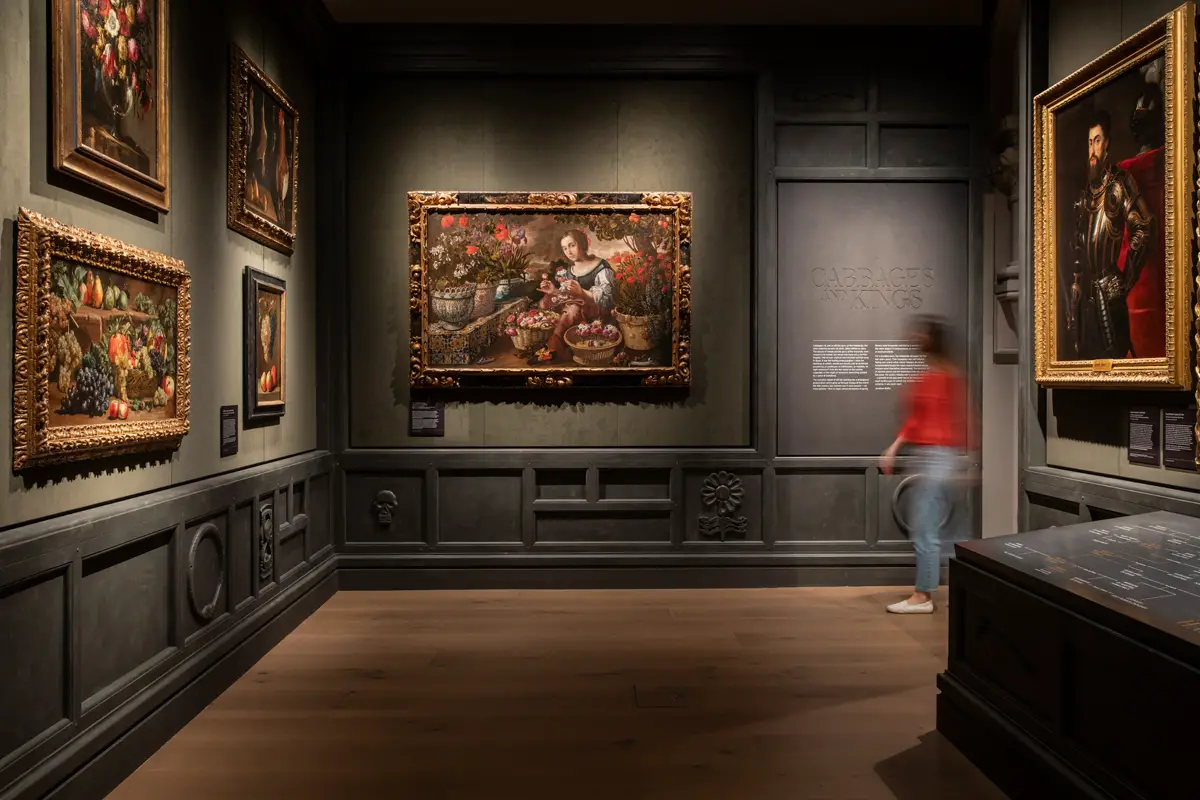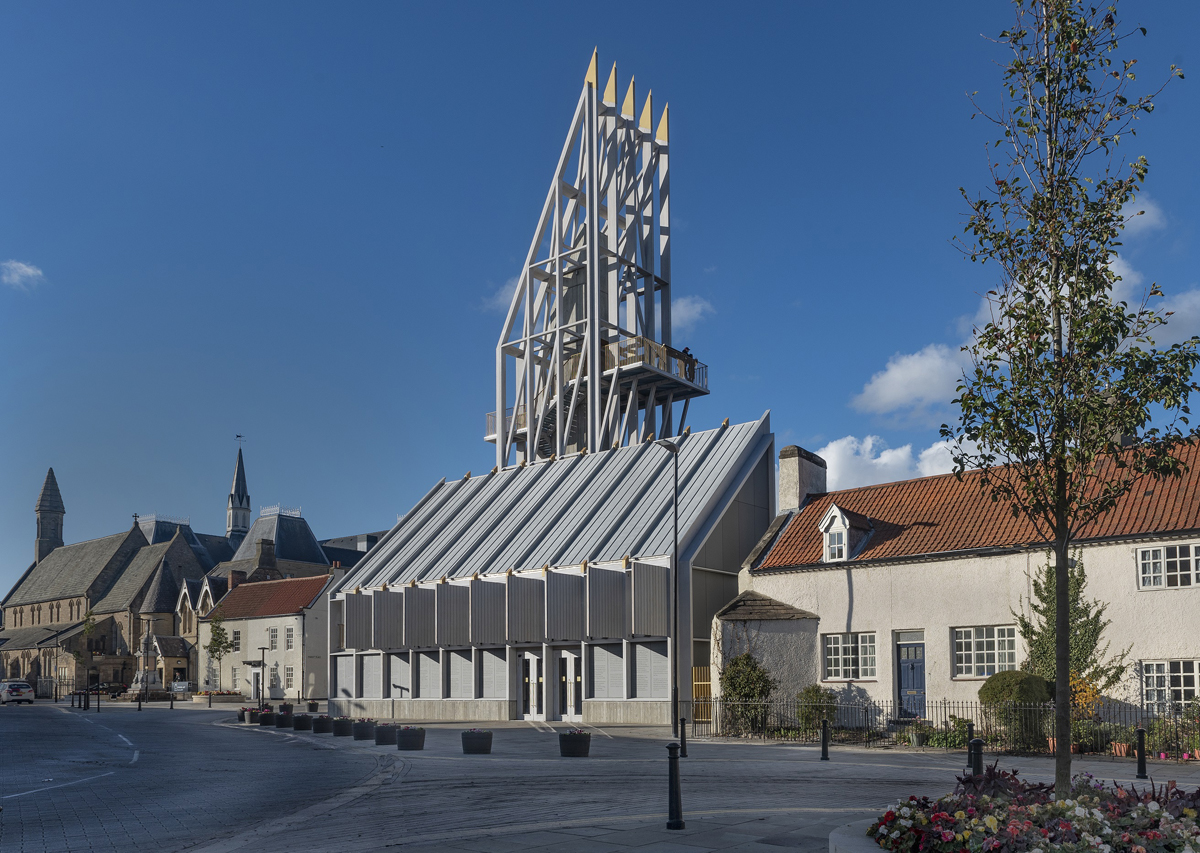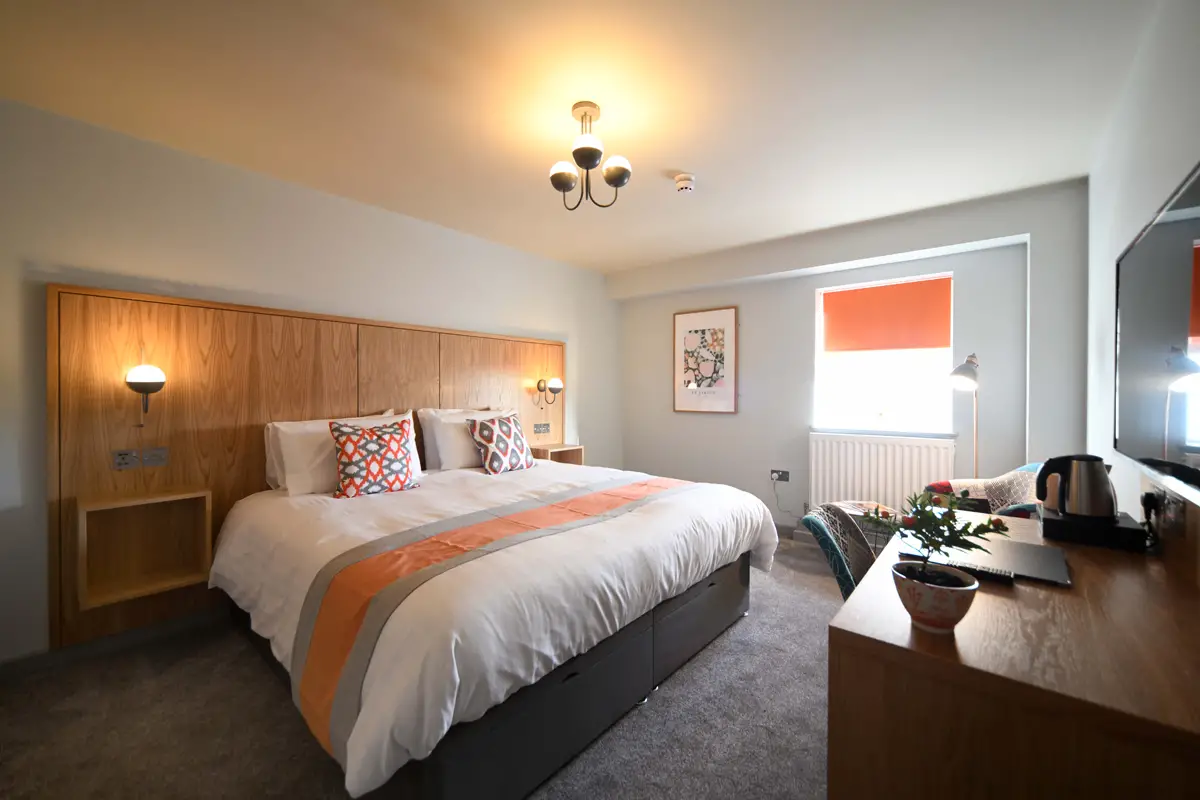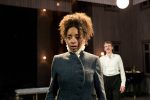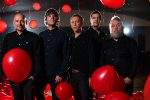Bishop Auckland and The Park Head Hotel – Review

By Clare Jenkins, October 2024
I’m in a gallery surrounded by great works of art from the Spanish Golden Age. On one wall is a full-length portrayal of Benjamin, youngest son of the Biblical Jacob, by the 17th Century artist Francisco de Zurbaran. On another, El Greco’s disturbing painting of Christ on the Cross. Elsewhere, two Murillo portraits of the Virgin Mary, first as a young Madonna, later as the Mater Dolorosa, mourning her son’s death.
Other galleries, all dark blue walls, are similarly devoted to the kind of brooding religious art you find in Europe’s Catholic churches and cathedrals. For light relief, a short video explains who’s who in the gallery’s copy of Velazquez’s world-famous Las Meninas, depicting the five-year-old Infanta Margaret Theresa of Spain with her maidservants. It includes Velazquez himself, standing next to his easel, paintbrush and palette in hand.
The gallery’s top floor, meanwhile, is like a Moorish palace, with colourfully patterned ceramic tiles and geometrically carved ceilings. Everything is suffused with Spanishness – including the El Castillo tapas bar next door.
But this isn’t Madrid, it’s Bishop Auckland in County Durham. And the building I’m in, on the edge of the town’s Market Place, is a former bank converted three years ago into the Spanish Art Gallery or ‘Prado of the north’. It’s all part of the astonishing cultural regeneration scheme called the Auckland Project.
“Magnificently restored”
The project – like the gallery – very much creates its own world. Around the Market Place, many of the handsome 18th and 19th Century buildings have been spruced-up. The parish church nestles against the impressive town hall, where an exhibition introduces me to the work of miner-turned-artist Norman Cornish, of whom more later. Whitewashed cottages with rose gardens in front lead to the 18th Century gateway of the magnificently restored Bishop’s Palace, once the seat of the powerful Prince Bishops of Durham, now housing the current bishop’s office, and open to visitors from Wednesdays to Sundays.
The area’s transformation, whilst still a work in progress in the surrounding streets, is all thanks to the multimillionaire philanthropist Jonathan Ruffer. Born in North Yorkshire, he’s invested £160 million in the town since 2012, renovating buildings, displaying some of his art collection in the public spaces, and creating an absorbing Faith Museum (top image).
The money has also helped renovate the Park Head Hotel in New Coundon, a mile or so outside the town on the road to Durham. And that’s where my husband and I are staying for a couple of nights, to explore the many attractions the project has to offer.
A former inn, the Park Head is a low, whitewashed building around a paved courtyard. Our room, like the rest of the hotel, is clean and bright, with stylishly pared-back furniture including jaunty 60s-style multi-patterned chairs.
“Extensive grounds”
The restaurant is equally cheerful, with local artwork and smart orange and turquoise furniture. The excellent food is sourced as much as possible from the palace’s 17th Century walled garden, whose produce is shared with local community groups and food banks. For vegetarians, it includes deliciously creamy butternut squash soup, pea and spinach risotto topped with samphire, and very filling halloumi vegetable skewers.
The next morning, we head back into town to the Auckland Tower, its viewing platform offering bird’s eye views of the surrounding countryside as well as into the extensive grounds and gardens of the palace. Retired teacher Peter Mackie points out a water feature currently being created in the stables’ courtyard below. “Look at this,” he says. “It’s designed like a huge cross. What the Ruffers have done is just amazing. There was nowt here before. There are all sorts of things going on now.”
Inside the palace, we’re pointed first towards St Peter’s Chapel, created in 1665 from the remains of the medieval great hall. And it’s very fine, with soothing polyphonic music and fascinating stained glass tracing the building’s history.
“Opulent tapestry”
A video relates the story of the Prince Bishops, rulers of the north for 750 years. The palace itself is an opulent tapestry of state rooms, decorated in rich colours, with intricately carved plasterwork ceilings. The rooms trace the timeline of the bishops, from the 11th Century through to the more homely 1980s booklined study of Bishop David Jenkins, the so-called ‘bishop of blasphemy’ because of his refreshingly radical views on God and the Church.
In the Bishop Trevor Gallery, overlooking the River Wear, we catch the final days of a European Masterpieces exhibition. The paintings, dating from 1600 to 1900, include a couple of Rembrandt portraits of a husband and wife, looking directly at us with slightly amused looks. Further on, the Long Dining Room houses Zurbaran’s striking paintings of Jacob’s other 11 sons, a permanent feature here since 1756.
A ground floor door leads us into the Faith Museum, opened just a year ago to trace 6,000 years of faith in Britain. Though its main theme is Christianity, its 250 objects also reflect other faiths, including Judaism, Hinduism, Sikhism – even Dissenters and spiritualists. On loan from places like the British Museum, Oxford and Cambridge universities, Durham Cathedral and the V&A, they include the 3rd Century Binchester Ring, one of the earliest examples of Christian symbolism to be found in Britain – the Roman fort of Binchester is just a few miles away. William Wilberforce’s Bible is also here, alongside a 19th Century abolitionist’s cup and saucer depicting ‘The Black Man’s Lament’.
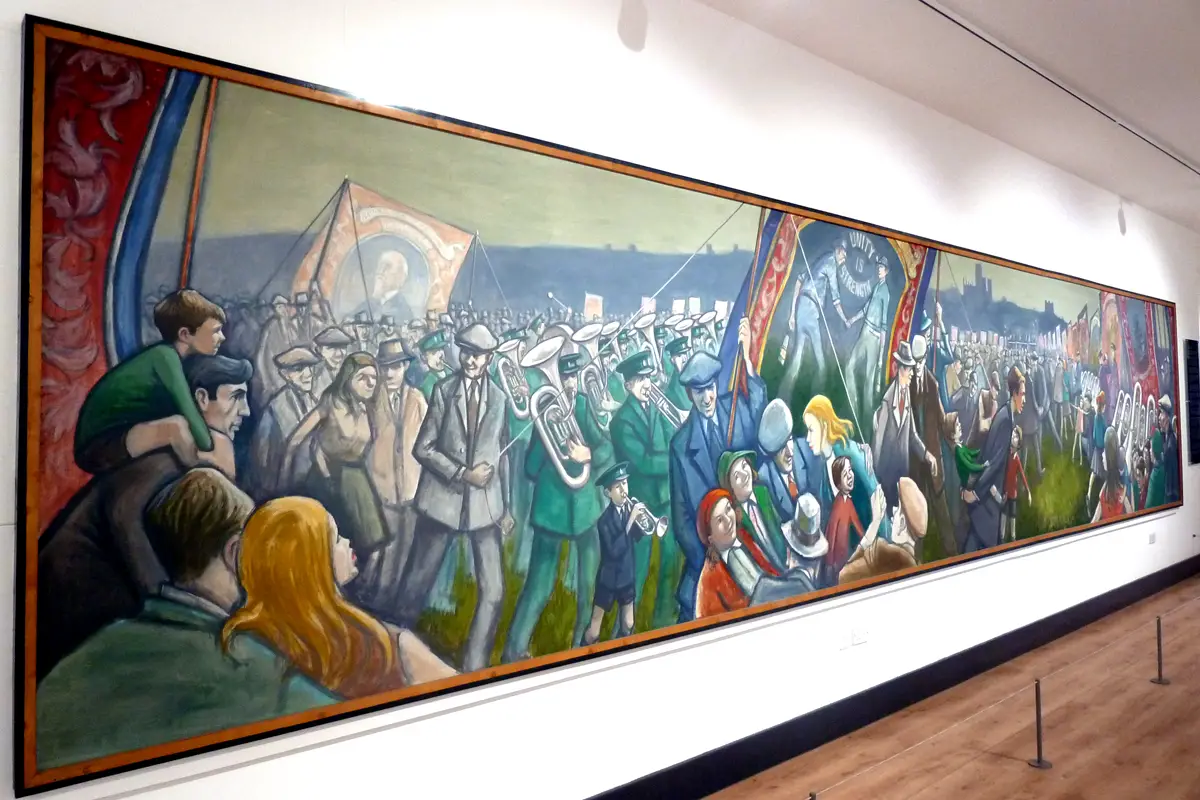
Part of Norman Cornish’s Miners’ Gala mural inside Bishop Auckland Town Hall
image: Stephen McClarence
“Arresting images”
The nearby Mining Art Gallery, meanwhile, offers unsentimental visions of life underground, thanks to the work of miner-artists like Tom McGuinness and Norman Cornish. Their paintings capture the harsh reality of pit village life, showing miners in flat caps, Wellington boots and thick overcoats trudging to work and drinking beer in the pub – what Cornish called ‘the amber-stained men’s world’. In contrast, the women are shown knitting, peeling vegetables, keeping their families and homes together in the face of harsh living and working conditions.
We’re just in time to see The Last Cage Down, an exhibition commemorating the 1984 Miners’ Strike and its impact on mining communities. Among the arresting images: Robert Olley’s 2018 angrily restrained reworking of Picasso’s Guernica as the Battle of Orgreave. From 19th October, The Last Cage Down will be replaced by the work of Ted Holloway, a wartime ‘Bevin Boy’.
There’s more of Norman Cornish’s work in Bishop Auckland town hall – and ten miles down the road at the Bowes Museum in Barnard Castle. This stunning French-style chateau is stuffed with art, this time the eclectic collection of John Bowes, illegitimate son of the 10th Earl of Strathmore, and his French countess wife Josephine. Among them are works by Goya, El Greco and Canaletto, together with textiles, tapestries, ceramics, clocks and costumes – and the iconic mechanical Silver Swan, which comes to life every day at 2pm.
The newly-opened Kith & Kinship exhibition traces the similarities and differences between the work of Cornish – a working-class insider – and that of L S Lowry, the ever-observant outsider. A Tyne Tees TV video of Cornish points out that, when Cornish was born in 1919, ‘there were a million coal miners working in Great Britain, nearly a quarter of them in the North-East.’ Fifty-odd years later, The Times was still describing Co Durham as ‘little more than one huge colliery’.
“A living town again”
Back at the hotel, reservations manager Daniel Round gives his personal perspective on Bishop Auckland. “People often pass through here on their way to Northumberland,” he says. “They don’t think there’s anything in this area apart from former pit villages, but we’ve got the Auckland Project, Durham and its cathedral, Raby Castle, Beamish Museum, and lovely countryside. It’s a wonderful place.”
It’s a view echoed at dinner by our young waitress at the Mediterranean-feel El Castillo tapas bar. After serving us delicious ‘small eats’ of beetroot hummus, tortilla, roast vegetables, potatoes, aubergine fritters, she gives her view on her home town.
“It felt like it was dying a few years ago,” she says. “But look at it now. It’s getting to feel like a living town again. Before all this happened, I’d probably have gone to Newcastle of Durham for a night or meal out. But now – I really like it here. It’s just so different.”
The Park Head Hotel, Park Head, Bishop Auckland, DL14 8QB
Double rooms B&B from £115
tel: 01388-661727
parkheadhotel.co.uk
aucklandproject.org
